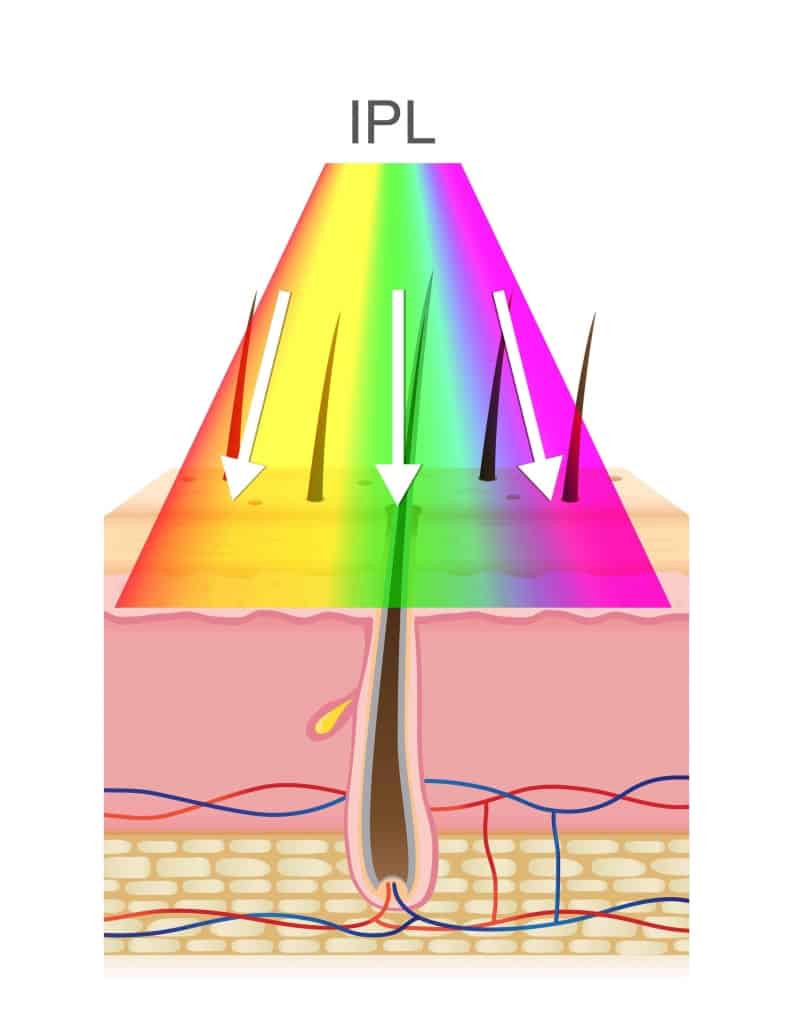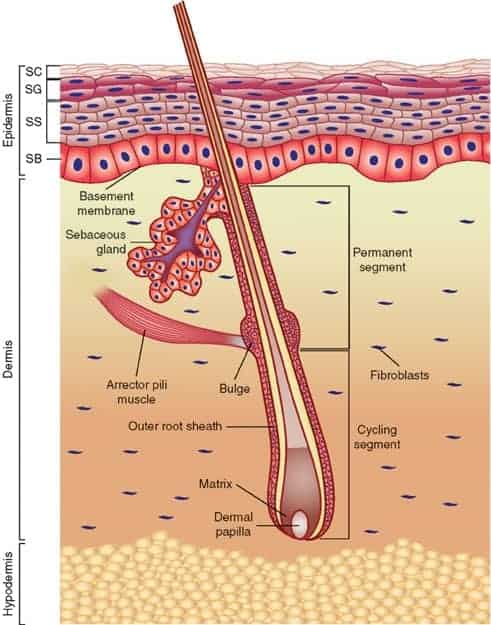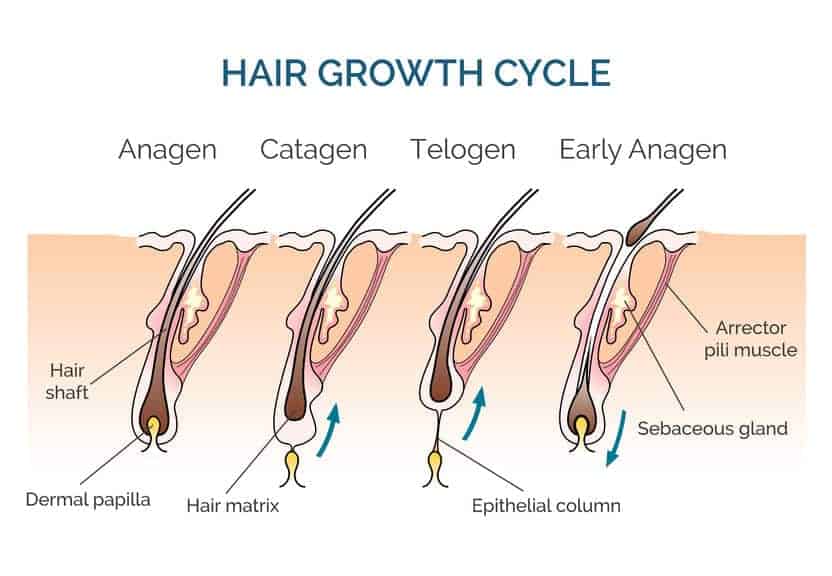Three technologies are used to achieve long-term hair reduction: electrolysis, IPL (Intense Pulsed Light), and laser. All attempt to disrupt (and ultimately destroy) your body's ability to grow hair using heat. Electrolysis is conceptually simple and direct: a technician inserts a needle into your hair follicle and, using some form of electricity, attempts to heat the cells responsible for hair growth.
By comparison, laser and IPL technologies are less direct. They use light to increase the hair temperature, indirectly transferring that heat to the cells responsible for hair growth. The difference between them is that laser light is coherent (the same wavelength and phase), while IPL is similar to sunlight - a combination of different wavelengths but more intense. That's the only difference. The mechanism of hair removal for both IPL and laser is the same. While electrolysis uses a needle to heat the cells and can work with hair of any color, the ability of light-based technologies to create heat is based on color. Black objects absorb the most light, converting it to heat, while white objects reflect the most light. This means that if you want to use light to heat a hair, it's desirable to have the darkest possible hair!
The substances that give molecules their distinctive colors are called chromophores. The chromophore responsible for hair color is melanin. Melanin absorbs wavelengths between 600-1100 nm, so lasers and IPL devices deliver those frequencies to the hair. Incidentally, we can only see wavelengths between 400-700nm (purple-red), which puts melanin's light absorption at the upper range (and beyond) for visible light. Here's a conceptual image of how IPL affects a hair follicle:

Cells containing melanin absorb the light and store it as heat (like your car seat when you park in the sun). If the hair extends above the skin (as in the picture), it won't affect the follicle, but it could be painful. So it's best to shave or epilate before light treatments.
The process of turning light into heat to damage the hair mechanism is called photothermolysis. Photo means light, thermo means heat, and lysis means "to cut." So photothermolysis means 'cutting' with light-generated heat. Melanin is also what creates skin color, but skin has a different color of melanin than your hair. We want to target the melanin in your hair (selective photothermolysis, Given the physics of the situation, the optimal setting is fair skin and dark hair.
What happens inside the follicle?
The hair follicle is a pocket in your skin where the cells that build the hair shaft and control the growth cycle live. Here's a picture:

There are three zones:
- Dermal Papilla fibroblasts. This is at the very base of the follicle and provides blood and nutrients.
- Hair Matrix with Matrix keratinocytes and melanocytes found in the hair bulb.
- Bulge with epithelial stem cells.
Not all of these contain melanin. The cells with melanin are the darkest and will feel the heat first. These are the melanocytes and keratinocytes in the matrix and shaft. These cells act as the "oven" that warms up the non-pigmented cells. We want to target the dermal papilla fibroblasts and epithelial stem cells because they trigger the hair's growth cycle.
The Hair Growth Cycle.
All of the hairs on your body share the same growth cycle:

- Anagen or active growth: The dermal papilla attaches to the hair follicle, and the hair starts to grow as cells divide and multiply in the hair bulb.
- Catagen or end of growth: the follicle and hair fibers retract from the dermal papilla and stop growing.
- Telogen or follicle inactivity: the hair follicle is inactive, and the hair eventually falls out or is pushed out by new hair growth.
Damage to the matrix keratinocytes causes the hair to jump to the catagen stage. The hairs immediately stop growing and will eventually fall out after a few weeks, giving quick, smooth, hairless skin. But damaging the matrix keratinocytes without affecting the dermal papilla and hair bulge cells only causes temporary hair loss. As long as the dermal papilla and hair bulge cells are fine, they will trigger new hair growth.
If we damage the dermal papilla fibroblasts and epithelial cells with enough heat, they will break down. This damage is irreversible and causes the hair follicles to miniaturize. In the next growth cycle, no hairs grow, or at most soft vellus hairs grow. These are so fine and light it seems as if nothing is growing.
The Growth Stage Matters
It matters where in the growth cycle we target the cells because the dermal papilla is only attached to the follicle during the Anagen stage. Because they are attached, that's when we have the best chance to transfer heat from the melanin-rich cells to the dermal papilla and epithelial cells. Since all your hair follows this cycle (but at different times), you need several hair removal sessions at regular intervals to get to the hairs in their anagen stage.
Home IPL: It's not quite the same
Home devices are not as powerful as those used at professional hair removal clinics. Home devices are not powerful enough to completely heat the dermal papilla fibroblasts. They primarily damage the matrix keratinocytes, which only causes temporary hair removal. But they do cause some damage to the fibroblasts, and continuing treatments will eventually destroy the dermal papilla fibroblasts and the stem cells in the bulge, creating the hoped-for permanent hair loss. There is some evidence that IPL treatments can result in long-lasting hair reduction of 85% for as long as a year without treatment. To get there, you need to be a good candidate and have maintenance sessions approximately every six weeks for a year.
This is why the phase-two sessions are so important. You should aim for 12-20 sessions for your first year of home use. Your hair reduction should increase and be longer lasting the more you do. Not so bad to be hair-free!
Obviously, inserting a needle into the follicle is a much more direct and sure route to destroying the hair-creating cells. Only time will tell whether or not laser and IPL can cause permanent, lifetime hair removal. However, currently, the only technology approved by the FDA for permanent hair removal remains electrolysis. That doesn't mean you shouldn't consider light-based technologies. They all have their place. For example, it's common to find people choosing IPL or laser for body hair removal and using electrolysis for their facial hair.
If you have questions, especially when trying out the Lumea, feel free to contact me. I'm also very interested to hear how it worked for you.